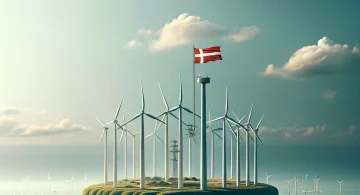Eyes, JAPAN
Food revolution: what are we going to eat in 30 years?
Veronica
Food is an essential part of human existence. We need it to survive, to grow, and to thrive. Feeding a projected population of 9.3 billion by 2050 will require a 60% increase in food production. However, traditional agricultural methods are unlikely to meet this demand, necessitating a food revolution. So, what will we be eating in 30 years?
As we look to the future, there are many changes that are expected to take place in the food industry. Here are some predictions on what kind of food people are going to eat in 30 years:
- Plant-based foods will be more popular
As more people become aware of the environmental impact of animal agriculture and the health benefits of plant-based diets, plant-based foods are expected to become more popular. In 30 years, we may see a significant shift towards plant-based diets, with meat and dairy products becoming less common.
- Insect-based foods
Alternatively, insects may become a staple food source due to their efficiency in farming. Crickets, for example, can generate 12 times more edible protein than cows per kilogram of feed. Insects could also replace soya as animal feed, freeing up more food for human consumption.
- Lab-grown meat
Lab-grown meat is a relatively new technology, but it has the potential to revolutionize the food industry. As the technology improves, it is likely that lab-grown meat will become more affordable and more widely available. In 30 years, we may see lab-grown meat products that are indistinguishable from traditional meat products.
- Personalized nutrition
Advancements in technology are making it easier to personalize nutrition. In the future, it may be possible to analyze a person’s genetics, gut microbiome, and other factors to create personalized diets that are optimized for individual health.
- Food waste reduction
Food waste is a significant problem, and it is likely that in 30 years, we will see more efforts to reduce food waste. This may include the use of new technologies to extend the shelf life of food and reduce spoilage, as well as changes in consumer behavior to reduce food waste at home.
- Vertical farming
Vertical farming is a method of growing crops in stacked layers, using artificial lighting and controlled environments. This approach to farming has the potential to increase crop yields and reduce the environmental impact of traditional agriculture. In 30 years, we may see more vertical farming operations in urban areas, providing fresh produce to people who live in cities.
- 3D printed food
3D printing technology has already been used to create intricate and complex shapes, but it also has the potential to revolutionize the food industry. In the future, it may be possible to 3D print food that is customized to individual tastes and preferences.
To sum up, the food industry is changing rapidly, and it is likely that we will see significant changes in the types of food that people eat in the next 30 years. Plant-based foods, insect-based foods, lab-grown meat, personalized nutrition, food waste reduction, vertical farming, and 3D printed food are just a few of the trends that are expected to shape the future of food. As these changes take place, it will be important to ensure that they are sustainable, healthy, and accessible to all.
P.S. As an AI enthusiast I got some assistance from chatGPT and DALL-E.

 2024/04/23
2024/04/23 2024/03/26
2024/03/26 2024/02/27
2024/02/27 2024/02/23
2024/02/23 2024/02/09
2024/02/09 2024/02/02
2024/02/02 2024/01/23
2024/01/23 2024/01/12
2024/01/12